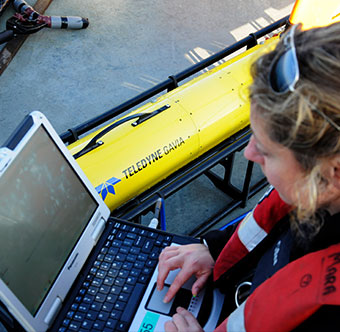-

 Robotics at SAMSRobotic applications for Marine Research
Robotics at SAMSRobotic applications for Marine Research
SAMS robotics activities represent a cutting-edge fusion of technology and science, aimed at advancing marine research and training the next generation of scientists and engineers.
The Scottish Marine Robotics Facility at SAMS is equipped with a diverse array of robotic technologies designed to explore and monitor marine environments. These include Autonomous Underwater Vehicles (AUVs), Remotely Piloted Aircraft (RPAs), gliders, and various seabed mapping technologies. These robots are deployed in challenging environments, from deep-water lochs to polar regions, to gather critical data that informs our understanding of marine ecosystems and climate change.
One of the key initiatives at SAMS is the Scientific Robotics Academy (SRA), which aims to train the next generation of environmental and climate scientists in the use of autonomous instrumented platforms. The SRA provides comprehensive training programs that cover the deployment, operation, and data analysis of marine and airborne robotics. This fusion of engineering and marine science enhances the capabilities of students and professionals, equipping them with the skills needed to address complex environmental challenges.
SAMS robotics activities are not just about technology; they are deeply integrated with scientific research. The facility's scientific team designs missions and interprets data to provide a complete package of marine observations 1. This approach has supported numerous research projects, including studies on sea-ice dynamics in the Arctic and the dramatic reduction in summer-time sea-ice coverage. The integration of robotics into these research efforts allows for more precise and comprehensive data collection, driving forward our understanding of marine environments and informing sustainable practices.
